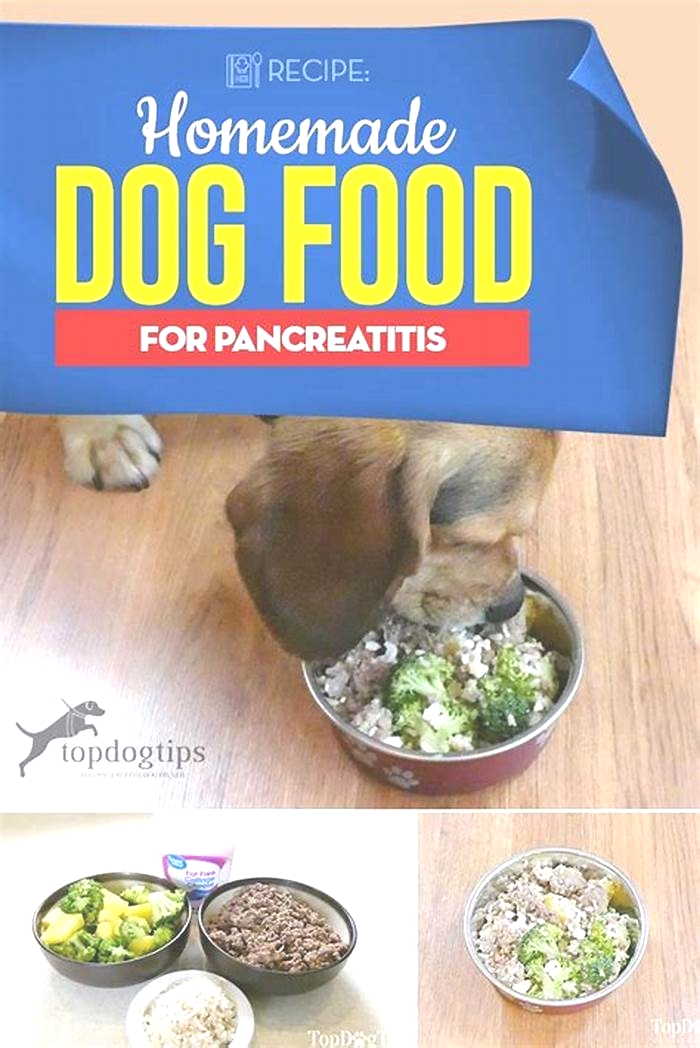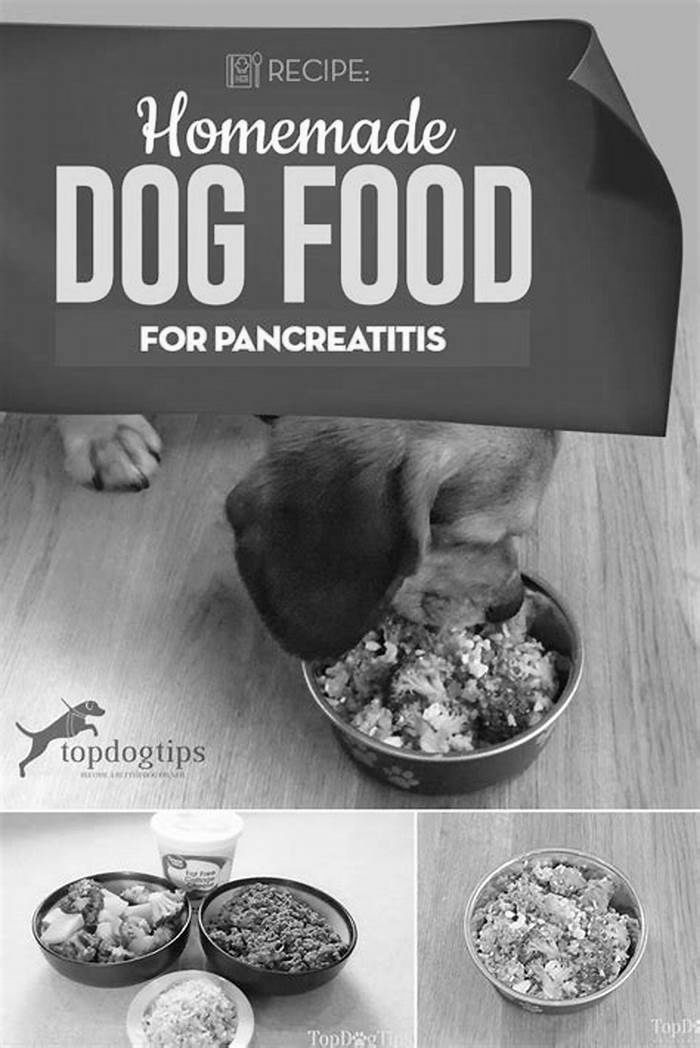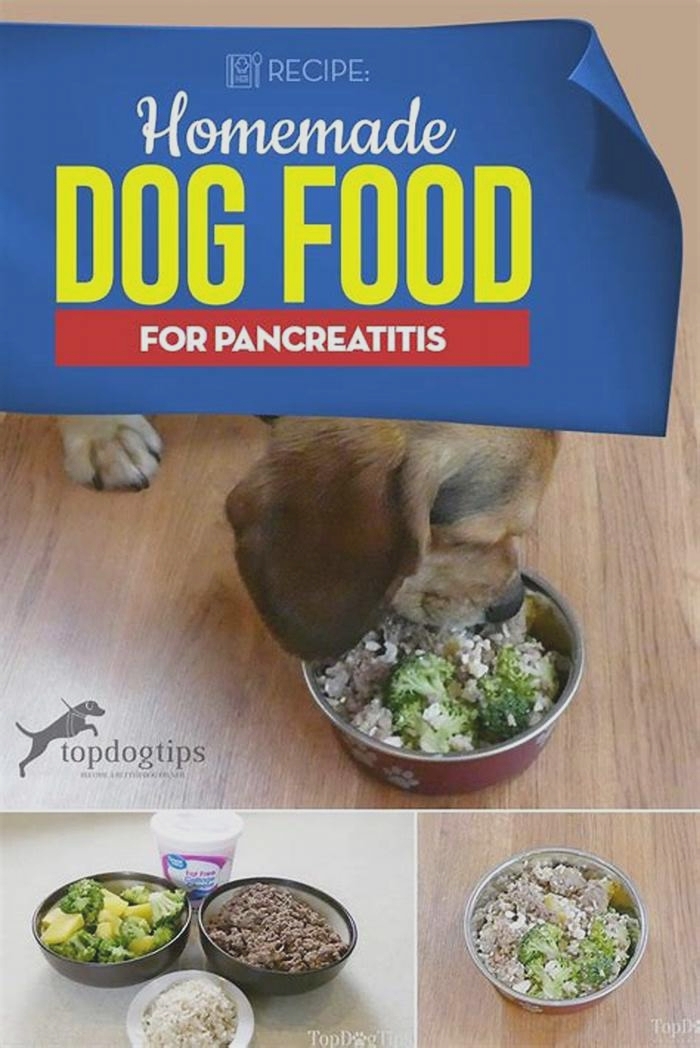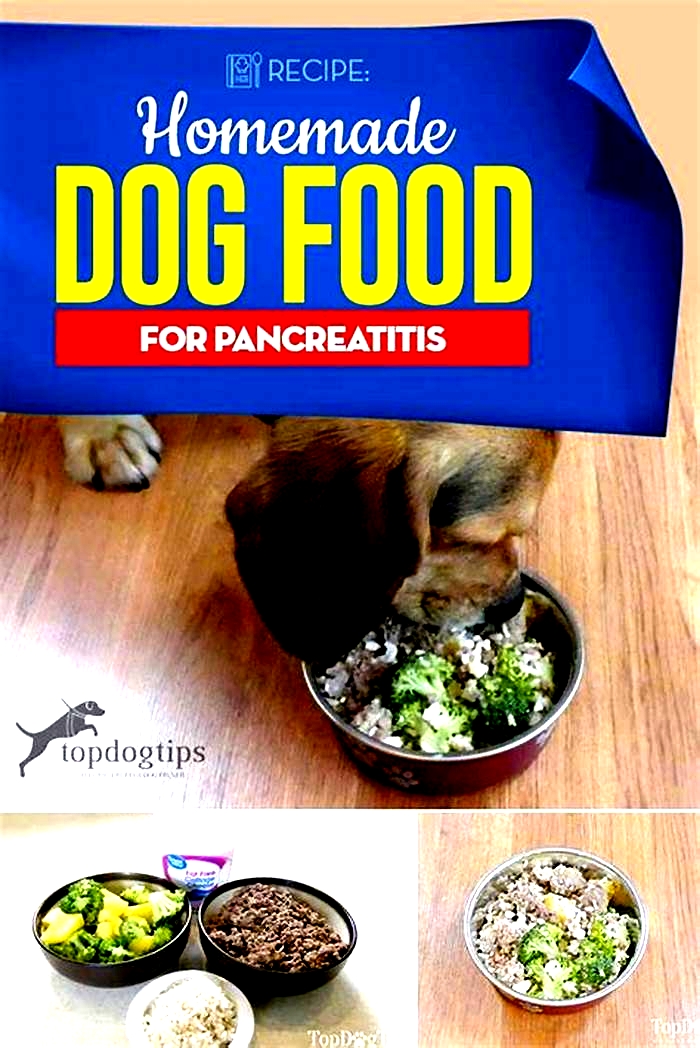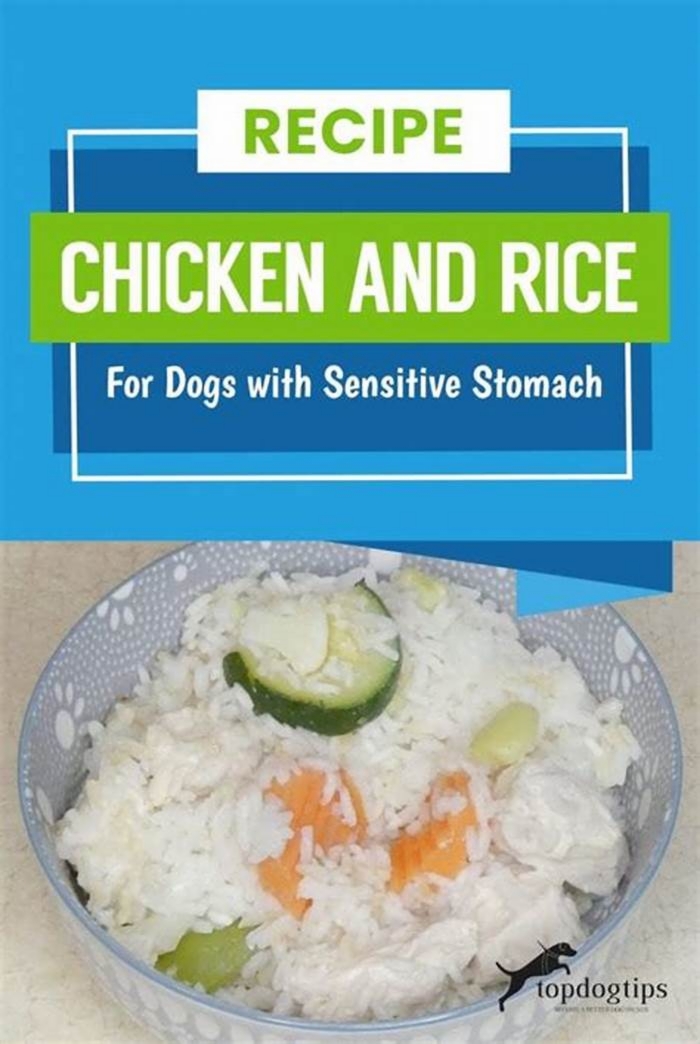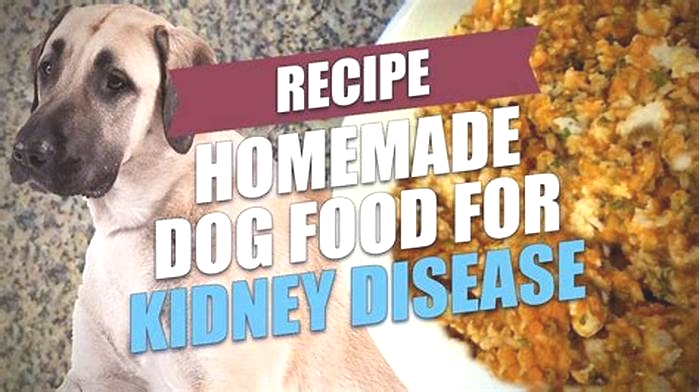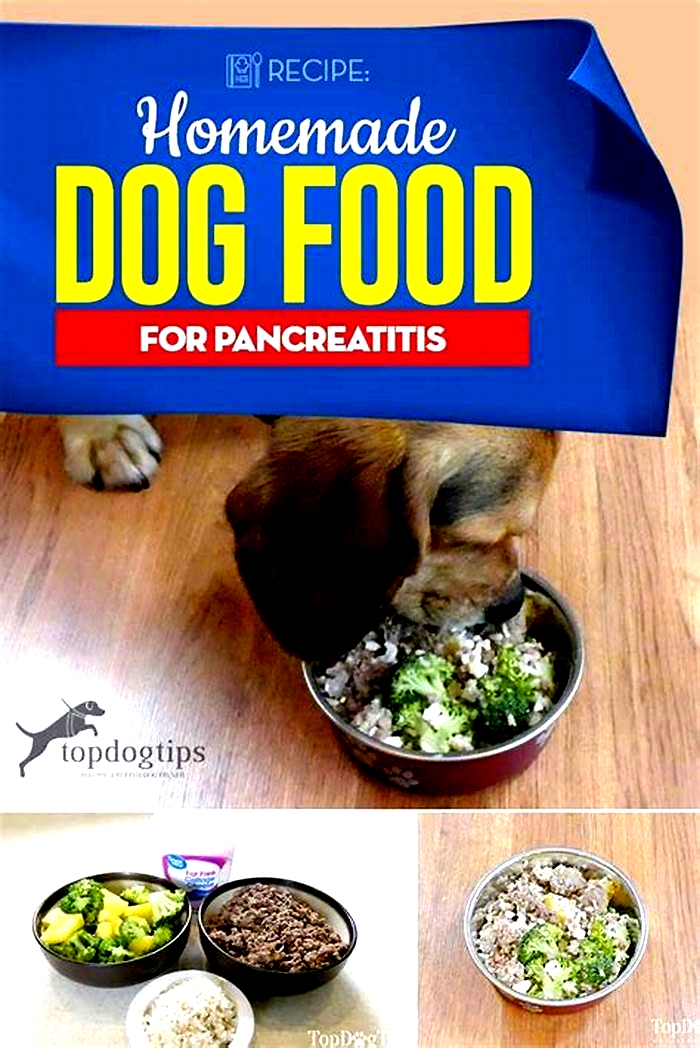dog pancreatitis diet homemade
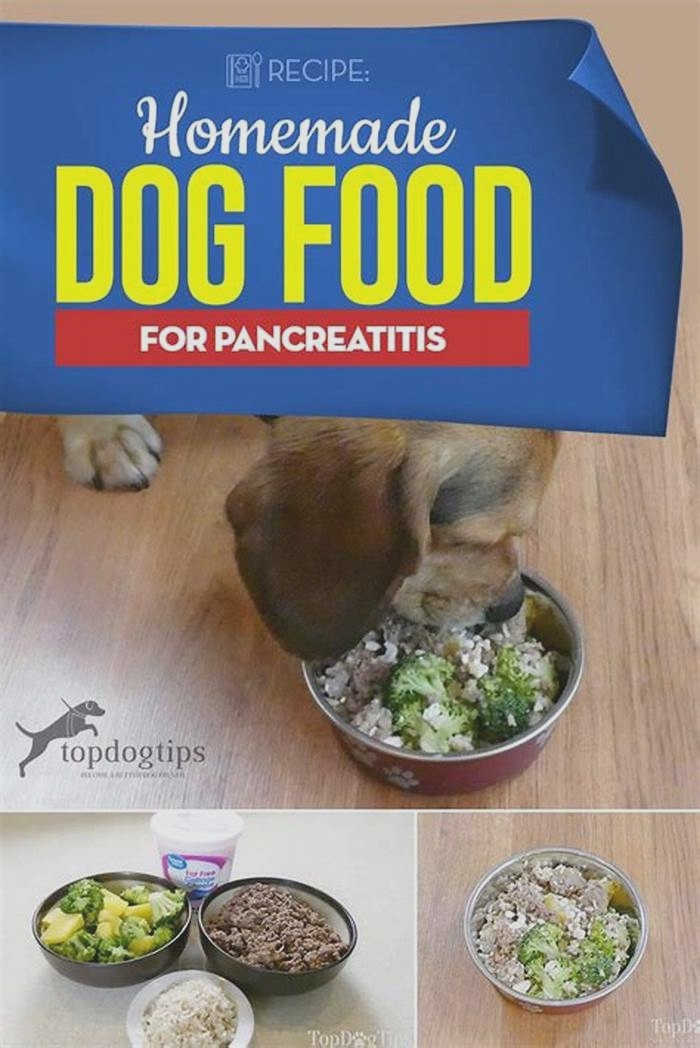
Recipe: Homemade Dog Food for Pancreatitis
Pancreatitis in dogs is a disease that is quite common in domestic canines. This condition is an inflammation of the animal's pancreas (the organ is responsible for producing digestive enzymes and insulin). Serving homemade dog food for pancreatitiscan help manage this condition.
 When the pancreas becomes inflamed, the digestive enzymes it produces spill out and onto the surrounding organs. The organs closest to the pancreas are the liver and kidneys. When digestive enzymes spill over onto these vital organs, the body begins to digest them.
When the pancreas becomes inflamed, the digestive enzymes it produces spill out and onto the surrounding organs. The organs closest to the pancreas are the liver and kidneys. When digestive enzymes spill over onto these vital organs, the body begins to digest them.
Vomiting, fever, diarrhea, and difficulty breathing are all symptoms of pancreatitis. If any of these symptoms come on quickly or you notice a combination of the previously mentioned symptoms, you need to seek veterinary attention immediately. I know these symptoms could also be a sign of numerous other conditions, but when it comes to your dog's health, it's better to be safe than sorry.
Your veterinarian will likely recommend a restricted diet if your dog is diagnosed with pancreatitis. Your dog's body has a lot of healing to do, and a limited diet that includes homemade dog food for pancreatitis is likely the best option.
READ MORE:Pancreatitis in Dogs Symptoms, At-Home and Veterinary Treatment, Prevention
Homemade Dog Food for Pancreatitis Recipe
 Ingredients
Ingredients
- 1 cup lean ground beef (fat drained)
- 1 cup brown rice (cooked)
- 3/4 cup nonfat cottage cheese
- 1/2 cup squash
- 1/2 cup broccoli
Directions
If you don't seek veterinary care for a dog suffering from pancreatitis, the condition is sure to get worse. In fact,if left untreated pancreatitis can be life-threatening. Low-fat diets are typically recommended for dogs suffering from this condition.
This homemade dog food for pancreatitis is simple to make. With just 5 ingredients, this recipe takes about 30 minutes to prepare.
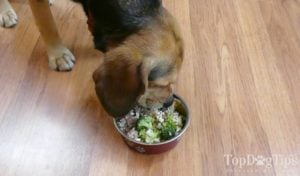 First, you'll need to cook the ground beef and drain the fat. You will also have to cook the rice according to the instructions on the package. You need 1 cup of COOKED rice, which will come from about 1/2 cup of UNCOOKED rice.
First, you'll need to cook the ground beef and drain the fat. You will also have to cook the rice according to the instructions on the package. You need 1 cup of COOKED rice, which will come from about 1/2 cup of UNCOOKED rice.
You will also need to steam or boil the squash and broccoli. Once all of the ingredients are prepared, all you have to do is combine them in a medium-size mixing bowl.
The recommended serving size for this homemade dog food for pancreatitis is about a 1/2 cup for every 25 pounds of body weight per serving. You'll need to feed 2 servings per day. For example, if your dog weighs 50 pounds, he would need 1 cup of food in the morning and 1 cup at night.
You can store leftovers in the refrigerator for 5-7 days. You can also make this food in bulk and store it in the freezer for up to 3 months.

READ NEXT: 6 Most Common Homemade Dog Food Ingredients
How To Feed A Dog With Pancreatitis Naturally
How To Feed A Dog With Pancreatitis Naturally
Have you ever known anyone who has suffered from Pancreatitis? The pain they are in is almost unbearable to watch. Now imagine your dog having pancreatitis, but it can not verbally tell you the amount of pain they are in. Just like in humans, dogs can get pancreatitis all of the sudden, and the chances if they have it once, that they get it again are great. And it is more common than you think.
Ask your vet and they will tell you, dietary modification is actually the most important component in the long-term management of dogs with pancreatitis. Here is what you need to know about canine pancreatitis and what to feed a dog with pancreatitis.
The Canine Pancreas & Pancreatitis in Dogs
The pancreas is a gland that sits near the stomach and the upper abdomen in a dog. It is unique in that it is both an endocrine gland and a digestive organ.

As a digestive organ, the pancreas plays a role in secreting digestive enzymes that break down food and assist in the absorption and digestion of nutrients and fats in the small intestine. These enzymes include Amylase which aids in the digestion of carbohydrates, Lipase to digest fat, and Protease to digest protein.
As an endocrine gland, the pancreas aids in the production of hormones such as insulin, glucagon, somatostatin, and vasoactive intestinal peptides (VIP) which help control how nutrients are utilized and absorbed.
What is Pancreatitis in Dogs?
Pancreatitis is the inflammation of the pancreas and can cause severe issues in the GI tract. Compared to other mammals, the digestive tract of dogs is much shorter. Normally, the pancreatic enzymes poduced are inactive until they travel to the small intestines where they are activated to begin digestion.
When the pancreas becomes inflamed, its digestive enzymes activate prematurely in the pancreas instead of waiting till they reach the small intestines, resulting in the digestion of the pancreas itself. When that happens, those enzymes may leak into the abdomen which can cause damage in this area and cause problems to the kidney and liver.
What are the Clinical Signs of Pancreatitis in Dogs?
When a dog has an attack of pancreatitis, they may take a position similar to that of a play bow, with their rear in the air and front legs and head lower to the ground. Their back may look more hunched-back, rather than straight.
They are likely to look lethargic and/or depressed and will likely not be interested in their food. You may also see physical symptoms such as diarrhea or vomiting.

Canine Diet for Pancreatitis in Dogs
Pancreatitis is not curable but can often be managed through diet. Ask your vet and they will tell you, dietary modification is actually the most important component in the long-term management of dogs with pancreatitis. The goal of the diet is to require the least amount of work on the GI tract, and therefore the least amount of stress on the pancreas. Feeding smaller meals more often rather than one or two large meals helps in minimizing GI stress.
In addition, the following should be considered in a healthy diet for a canine with pancreatitis. As always, consult with a veterinarian. Pancreatitis is not something to be taken lightly, and unfortunately, once a dog has a bout of pancreatitis, it is likely to occur again.
Highly Digestible
For dogs suffering from pancreatitis, having a highly digestible diet is a must. Foods that are whole foods rather than highly processed are typically more digestible and provide greater nutrients. When foods are highly digestible they result in absorption occurring in the small intestines, which means that the remainder of the bowel can rest as the amount of food getting into the large intestines undigested is minimal. Quality over quantity is the key here. The foods should have a digestibility coefficient of >= 90% (Dry Matter (DM) digestibility).
Low-Fat
A diet for a dog with pancreatitis should have less than 10% fat. Look for a good dog food that is labeled as being for senior dogs or marketed as a weight control food. Make sure to cut out table scraps and consider what is in the snacks and treats that you may be used as the same goes for them.
Protein Source
While protein is a must for a healthy dog, protein can also stimulate a dogs pancreas. It is important that the diet have a moderate protein level, at the same time it is important to ensure that it is a single high-quality protein that is in the food.
Gluten-Free Carbohydrates
We have already stated that the food should have a moderate level of protein and contain no more than 10% fat, so what makes up the rest? Carbohydrates. Carbohydrates cause the least amount of pancreatic enzyme secretion. Preferably carbohydrates that are gluten-free as they will be considerably easier on the GI. Brown rice, tapioca, corn, or sweet potatoes are good sources of gluten-free carbohydrates so look for them.
Low Fiber
Because food for a dog suffering from pancreatitis needs to be highly digestible, it should include lower fiber content. Look for a 3-7% fiber content. The fiber that is being consumed should come from a moderately fermentable source, meaning it will aid in maintaining a healthy balance in the gut. Pumpkin and beetroot are two examples of fermentable fiber.
Foods Approved For Dogs Who Suffer From Pancreatitis
Several pet food companies manufacture dog food formulas that are specifically designed for dogs that suffer from pancreatitis. Here is a list of some of the commonly recommended manufactured foods.
Foods Acceptable For Use in Home-Cooked Diets For Pancreatitis in Dogs
- Boiled, skinless chicken breast
- Whitefish
- Cooked potatoes or sweet potatoes (with skins removed to reduce fiber)
- Low-fat cottage cheese
- Boiled, skinless turkey or low-fat ground beef
- Cooked broccoli and cauliflower
- Cooked winter squash
- Egg whites
- Cooked peas
- Rice
- Pumpkin
Important Guidelines to Follow For Home-Cooked Diets: If making your own homemade food or substituting human-grade food with your dogs existing diet, make sure to cook the foods well, or even soak foods overnight to increase their digestibility. All foods, even if your dog has been on a raw diet, should be cooked thoroughly. A dog with pancreatitis already has a compromised gut, it is important to kill any possible bacteria with heat.
Supplements For Dog Pancreatitis
Digestive Enzyme Supplements
There are a wide array of digestive enzyme supplements available to help support the pancreas by reducing its workload and aiding in inhibiting pancreatic secretion. They are available in both over-the-counter strengths as well as prescription strength. Look for something labeled Pancreatin which is a combination of protease, amylase, and lipase, the digestive enzymes naturally produced by the pancreas.
Essential Fatty Acids
Fatty acids are the exception to the low-fat rule for pancreatitis. Fish oil can actually help lower blood lipid levels and decrease inflammation. The ACVN, American College of Veterinary Nutrition, recommends a therapeutic dose of 700mg of combined EPA and DHA per 22lbs of dog to help alleviate symptoms of pancreatitis. Look for sources that contain refined salmon, krill, and flaxseed oil. When supplementing with fish oil, also supplement with 5 to 10 IU of vitamin E.
Probiotics and Prebiotics to Aid Microflora
Probiotics and prebiotics, what are they, and what is the difference? Both probiotics and prebiotics are essential in maintaining your dogs healthy gut microbiome. Probiotics are essentially live microorganisms that when administered in adequate amounts confer a health benefit to the host. Whereas prebiotics, are essentially fiber, which feeds the good bacteria that already exist in your dogs gut.
The fiber travels undigested to the dogs colon where it ferments and is converted into short-chain fatty acids (SCFAs). SCFAs inhibit the growth of harmful bacteria and support the helpful ones.
Probiotics and prebiotics are particularly helpful in dogs with pancreatitis. Probiotics such as Lactobacilli and bifidobacterium can help aid in the synthesis of digestive enzymes, help the production of antitoxins, and drive immune responses. They can help with inflammation and decrease the loss of electrolytes. Enhancing digestion will aid in the uptake of nutrients while shortening the gastrointestinal transit time. These probiotics will help improve the intestinal barrier and prevent bacterial translocation.
Here are two great options to consider:
Benonite Clay
Benonite clay has been shown to be beneficial to add to a diet when the pancreas is not working sufficiently or when your dog is experiencing diarrhea. In trials, it has been shown to enhance intestinal mucosal integrity and the production of digestive enzymes[i]. It is a natural phosphate binder and will help to bind substances in the lumen of the GI for elimination.
When using Benonite clay you want to give it on an empty stomach and wait two hours until allowing your dog to consume anything else. Ensure you are following dosing instructions and that you are using a quality and reputable source.
Organotherapy For Pancreatitis
Organotherapy, also known as tissue therapy, is a homeopathic therapy based on the concept that you can repair an organ by introducing it to tissues or extracts from healthy versions of the same organ. Basically, in the case of pancreatitis, pancreatic tissue extract would be used to help support, restore, or manage issues within the pancreas.
This concept dates back to an experiment on insulin and diabetes, done in the 1920s. Two groups of dogs, both without a pancreas, were fed two different diets. One was fed their normal food along with insulin and the other was fed raw pig pancreas along with their normal food. The group fed the raw pig pancreas showed significantly better results in regard to their health and lived significantly longer. You can read more about organ therapy as a treatment and the experiment.
While this is a therapy that has been used for decades, further exploration in both laboratory studies and clinical trials is needed. Other animal organs such as stomach, SI tissue, liver, kidney, spleen, glandular, and bile sales have also been used in the treatment of dogs with Pancreatitis.
PMG and Cytosol, which are extracted from cells, as well as PMG, Protomorphogen Extract, are other forms of organotherapy that have been thought to improve pancreatic cell biochemistry and their ability to respond to physiological demands and prevent acinar atrophy.
For more information or to see related products, check out Standard Process Veterinary Formulas.
Aloe Vera Juice
The healing powers of the aloe vera plant Aloe Vera provides an array of benefits to pets from helping with itchy skin to improving joint health. It is naturally high in amino acids (including 8 out of 10 essential amino acids for dogs), vitamins, minerals, and antioxidants.
When ingested internally allow vera can help to restore balance and aids digestive enzymes, provides anti-inflammatory benefits, as well as offers antiseptic properties.
The slow introduction to aloe vera is recommended when first introducing it to a pet due to the slightly bitter taste and the fact that it can act as a natural laxative if given too much, too soon, which is something you want to avoid when a dog has pancreatitis.
When using Aloe vera in pets it is important to only use reputable brands that are 100% aloe vera, look for something labeled organic aloe barbadensis leaf juice. If you are using aloe directly from the plant it is important to only use the clear liquid gel and DO NOT ALLOW YOUR DOG TO DIGEST THE ALOE LATEX (THE YELLOW LAYER BETWEEN THE GREEN LEAF AND CLEAR GEL).
Curcumin
You may be aware of the health benefits of curcumin or turmeric in humans, but did you know that many of those same benefits apply to dogs as well? Curcumin, found in yellow spice turmeric, has antioxidant, anti-inflammatory, antiviral, antibacterial, antifungal, wound healing, and anticancer properties. The anti-inflammatory benefit for dogs with pancreatitis combined with the lack of side effects can bring your dog much relief.
Curcumin by itself can be hard for a dog to absorb by itself, so you want to combine it with a healthy oil to increase the absorption. Making Turmeric Golden Paste is a great option that will help increase the results of the beneficial properties.
Check out this recipe for Turmeric Golden Paste!
For something already prepared, consider:
Conclusion
There is no cure for Pancreatitis, and owners who have dogs that suffer from it must pay close attention to their dogs weight and diet. Owners should always consult with a veterinarian on an ongoing basis to ensure the diet they are feeding is optimal for their pets situation. Your veterinarian is best equipped to help you in maintaining a balanced diet and taking any preventative measures.
For more help with a diet for a dog with pancreatitis Consult With A Canine Nutritionist.
Visit our Homemade Recipes For Dogs For More Information
[i] https://www.ncbi.nlm.nih.gov/pmc/articles/PMC5632318/

